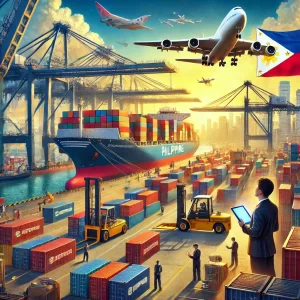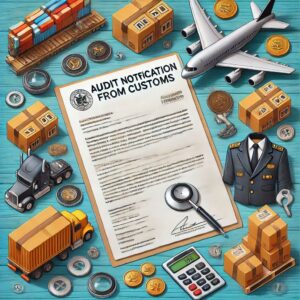Amid global trade’s vast expanse, “Optimizing Shipping Costs: Navigating the Sea of Transportation” is crucial for business success. With e-commerce growth and complex supply chains, efficient sea transport is vital. This guide aids in navigating international shipping complexities, offering cost-saving strategies.
In the world of international trade, shipping costs can make or break a business. With the rise of e-commerce and global supply chains, efficient and cost-effective sea transportation has become more crucial than ever. This blog post will guide you through the process of optimizing shipping costs and navigating the complex sea of transportation.
Understanding Shipping Costs
Subscribe to the Ex-works24/7 newsletter
Frequently
Asked Questions
The cost of shipping from the Philippines to the United States varies depending on several factors such as the shipping carrier, package weight, size, and the chosen shipping method (standard, expedited, or express).
- Standard shipping (via USPS, for example): Typically costs around $20 to $50 for small packages (under 2 kg), with delivery times ranging from 7 to 21 days.
- Express shipping (via FedEx, DHL, or UPS): Can range from $50 to $150 or more for a 1-2 kg package, with delivery times between 3 to 7 days.
- Flat-rate options: Some carriers like USPS offer flat-rate boxes for international shipments, which may be more economical depending on the size of the package. For example, a USPS Priority Mail International Flat Rate Box may cost around $60 to $80.
To get a precise quote, it’s best to use the carrier’s shipping calculator based on your package details.
Shipping from the Philippines to other countries in Southeast Asia is generally comparable, though it can sometimes be more expensive due to the Philippines' geographic location and infrastructure challenges.
- From the Philippines to other Southeast Asian countries (e.g., Singapore, Thailand, Malaysia):
Shipping costs are typically lower than to long-distance destinations like the US or Europe, ranging from $10 to $50 for small parcels (under 2 kg) sent via air mail or standard services. - Air vs. Sea Freight: Shipping by sea is usually more cost-effective for larger shipments (over 5 kg), but it takes longer. Air freight is faster but more expensive.
- Regional shipping services: Some couriers, like Ex-works Cargo LBC Express, 2GO, and JRS Express, offer specialized regional rates for shipments within Southeast Asia, often providing competitive pricing compared to global couriers like EX-WORKS, DHL or FedEx.
Several factors influence the cost of shipping to the Philippines:
- Shipping Method: Air freight is faster but more expensive, while sea freight is more affordable but takes longer (up to several weeks).
- Package Size and Weight: Larger and heavier packages incur higher costs. Carriers charge based on both actual weight and dimensional (volumetric) weight, so packaging your items efficiently is key.
- Customs Duties and Taxes: The Philippines imposes customs duties and taxes on imports, which can add to the total cost of shipping. Duty rates depend on the type of goods being shipped, with some categories being exempt or reduced.
- Delivery Location: Shipping to remote or rural areas in the Philippines may incur additional surcharges. Metro Manila is typically cheaper and faster to reach compared to islands or provinces.
- Carrier Choice: International couriers like DHL, FedEx, and UPS generally offer faster services but at a premium, while local couriers like Ex-works, LBC, JRS Express, and 2GO offer more affordable, though sometimes slower, options.
Yes, there are affordable options for sending small packages to the Philippines, especially if you're willing to use slower services or local carriers:
- USPS (United States Postal Service): For small, lightweight packages (under 2 kg), USPS offers affordable options like First-Class Package International Service (around $15-$30), though delivery times may vary (10-20 days).
- Philippine Postal Service (PhilPost): PhilPost offers lower-cost international shipping options for small parcels, including EMS (Express Mail Service) and Airmail, with prices starting around $15-$25 for packages up to 2 kg.
- LBC Express: A popular local courier offering international shipping services with competitive rates, especially for small businesses. Rates to the US and other countries can start from $30-$50 for smaller parcels (under 2 kg).
- Shopee or Lazada Global Shipping: If you're selling goods to customers in the Philippines, marketplaces like Shopee and Lazada offer integrated logistics and lower shipping costs for small items, with regional distribution centers that reduce shipping times and fees.
When shipping to the Philippines, customs duties and taxes are typically assessed based on the value of the goods being imported:
- Value Added Tax (VAT): The standard VAT rate in the Philippines is 12%, which applies to most imported goods.
- Customs Duty: The duty rate varies by the type of product. For example, clothing and electronics might have a higher duty rate (as much as 20%), while books or personal items may be exempt or have reduced rates.
- Exemption for Small Shipments: Goods valued under PHP 10,000 (roughly $180 USD) are generally exempt from customs duties, though VAT may still apply.
- Handling Fees: There are often handling fees charged by couriers for processing shipments through customs. These fees vary depending on the courier.
- Customs Declaration: It’s important to accurately declare the value and contents of the shipment to avoid delays or penalties. Inaccurate declarations can result in confiscation or fines.
For businesses or individuals sending frequent shipments, it may be helpful to work with a customs broker or use a carrier that offers duty and tax prepayment services to avoid surprises at delivery.




